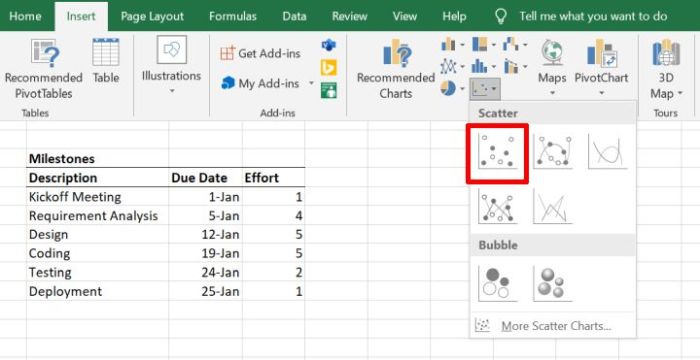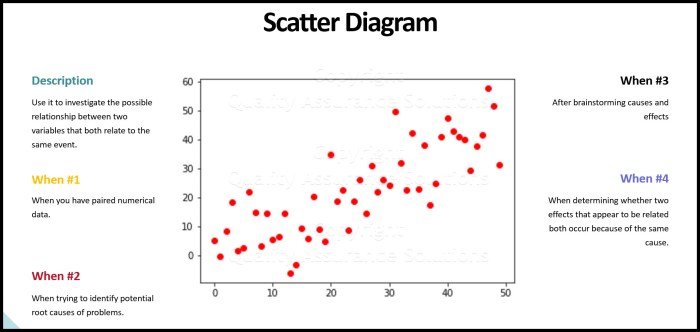Insert a scatter chart the 1st thumbnail – Insert a scatter chart to unveil the relationships and patterns hidden within your data. This comprehensive guide delves into the intricacies of scatter chart creation, empowering you to effectively communicate insights and drive decision-making.
Scatter charts are a powerful tool for visualizing the relationship between two or more variables, enabling you to identify trends, correlations, and outliers.
Insert a Scatter Chart

Scatter charts are a powerful tool for visualizing relationships between two numerical variables. They can be used to identify trends, patterns, and outliers in data. Inserting a scatter chart into a web page is a relatively simple process that can be accomplished using HTML, CSS, and JavaScript.
Thumbnail Design
The thumbnail is a small image that represents the scatter chart. It is important to design the thumbnail carefully so that it accurately represents the chart and entices users to click on it.
The following are some guidelines for designing a scatter chart thumbnail:
- Use a high-quality image that is clear and easy to see.
- Make sure the thumbnail is large enough to be seen easily, but not so large that it takes up too much space.
- Use a title and/or description to explain what the scatter chart is about.
- Use colors and fonts that are consistent with the rest of the website.
Data Visualization
The scatter chart should be designed to effectively visualize the data. The following are some guidelines for data visualization:
- Choose appropriate axes and scales for the scatter chart.
- Add data labels or annotations to the chart to help users understand the data.
- Use colors and shapes to distinguish between different data points.
- Use a legend to explain the meaning of the different colors and shapes.
Interactive Features
Interactive features can make the scatter chart more engaging and useful. The following are some examples of interactive features that can be added to a scatter chart:
- Hover effects that provide additional information about a data point.
- Tooltips that provide more detailed information about a data point.
- Zoom and pan functionality to allow users to explore the data in more detail.
HTML Table Integration, Insert a scatter chart the 1st thumbnail
The scatter chart can be embedded into an HTML table using the following steps:
- Create an HTML table with the desired number of columns.
- Add the scatter chart to the table using the <object> tag.
- Style the table and chart using CSS.
Bullet Point Examples
- Scatter charts can be used to visualize the relationship between two numerical variables.
- Scatter charts can be used to identify trends, patterns, and outliers in data.
- Scatter charts can be used to compare different data sets.
- Scatter charts can be used to make predictions.
Additional Considerations
The following are some additional considerations when inserting a scatter chart into a web page:
- Make sure the scatter chart is accessible to all users.
- Optimize the scatter chart for different devices and screen sizes.
- Troubleshoot any common issues that may arise when inserting the scatter chart into a web page.
Answers to Common Questions: Insert A Scatter Chart The 1st Thumbnail
What is the purpose of a scatter chart?
Scatter charts reveal the relationship between two or more variables, allowing you to identify patterns, trends, and correlations in your data.
How do I choose the right axes for my scatter chart?
The choice of axes depends on the nature of your data. Typically, the independent variable is plotted on the x-axis, while the dependent variable is plotted on the y-axis.
Can I add interactive features to my scatter chart?
Yes, interactive features such as hover effects, tooltips, and zoom functionality can enhance user engagement and provide additional context.


